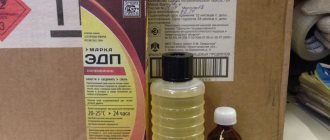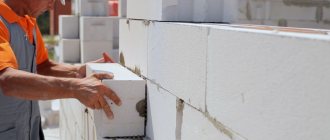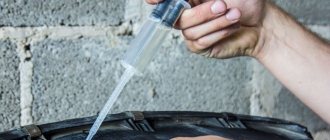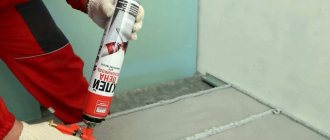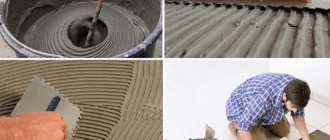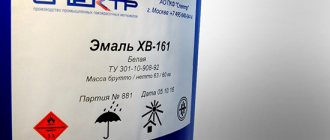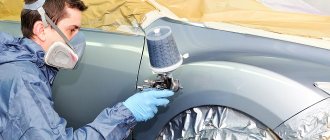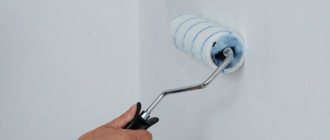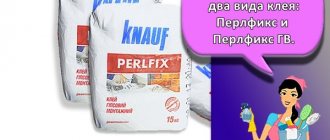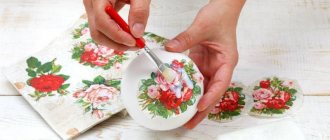Epoxy glue is one of the most popular. It is used in construction (for fixing tiles and filling cracks in concrete slabs), in mechanical engineering (for fastening brake pads, repairing gas tanks, fastening casings), in shipbuilding (for assembling fiberglass structures). It is no less widely used in everyday life - it is indispensable for repairing shoes and furniture, for sealing pipes, and creating various crafts.
Epoxy adhesive composition
Epoxy is considered universal. It firmly connects surfaces made of different materials. The main element of the adhesive mass is epoxy resin. It is able to penetrate deep enough into the surfaces being bonded, which ensures a strong and durable connection. Glue is a composition of epoxy resin and auxiliary components. Their characteristics are presented in the table.
| Proportion of substance by weight of dry resin | Substance | Properties | |
| Hardeners | up to 15% | Polyamines, aminoamides, polymer hardeners-modifiers, etc. | Change the state of a substance from a gel to a solid, determine the strength of the connection |
| Solvents | 3-5% | Xelol, various alcohols or acetone | Increases the speed of glue hardening |
| Fillers | from 50 to 300% | Powder (metal oxides, aluminum, silica), special fabrics, glass or carbon fibers | Determine the characteristics of the material, can work as hardeners and/or stabilizers |
| Plasticizers | up to 30% | Esters of phosphoric or phthalic acids | Determine the physical and mechanical characteristics of the mixture |
The range of epoxy adhesives is very wide; they contain the described ingredients in different proportions and combinations.
Basic information about the material
Epoxy resin in the adhesive composition is the basis. It is a synthetic oligomer that, when combined with a hardener, forms a cross-linked polymer. Naturally, the resin is interesting in practical terms only in the form of a two-component composition. The oligomer itself, that is, the main component, is not used. Epoxy adhesive, depending on the brand, is presented in the form of liquid or solid components. Their shades range from crystal clear to honey or even dark. In any case, the adhesive composition kit consists of component “A” - the main substance and component “B” - the hardener. The glue gets its properties by mixing the components.
Amines or carboxylic acids (polyamine, triethylenetetramine, anhydride) can be used as a hardener. The curing process is a chemical polymerization reaction that produces cross-linked polymers with very stable intermolecular bonds. As a result of curing, the seam is strong and resistant to both chemical and mechanical influences.
Good to know > Which media separator should be used for epoxy resin
Properties and scope of application of epoxy adhesives
The hardened adhesive forms a non-shrinking joint that is resistant to oils, alkalis and solvents. Epoxy has high adhesion to various substrates, easily tolerates sudden temperature changes in the range from -20 to +250 C, and is not an electrical conductor. The seam is elastic and can be sanded, painted, varnished and drilled. It is possible to add additional components to the main recipe, which gives the composition new properties.
Thanks to these properties, the material is widely in demand in many industries:
- Mechanical engineering. Production of abrasive tools, technical equipment, etc.
- Aircraft and astronautics. Production of solar panels, installation of thermal protection, internal and external, assembly of aircraft.
- Construction. Assembly of reinforced concrete bridge structures, three-layer building panels and much more.
- Shipbuilding and automotive industry. Assembly of fiberglass housings, fastening of parts from dissimilar materials, installation of highly loaded components, etc.
Photo: Instagram madewithdots
Application area
Before establishing the limits of applicability of epoxy adhesive, we will highlight the defining properties characteristic of the cured polymer. During the reaction between the components, there is no change in volume, that is, the seam does not shrink. It is formed with uniform density throughout the entire layer and does not form pores or cracks.
High adhesion rates allow you to glue products from a wide variety of materials. Only Teflon, polypropylene, silicone and plexiglass are exceptions.
The formed seam is not afraid of exposure to organic chemicals. It is also resistant to acids and alkalis. The operating temperature range for epoxy resin products is from –20°C to +250°C degrees. In this range, the polymer completely retains its properties. A durable and flexible layer of cured adhesive securely holds parts together even under conditions of high shock and vibration loads. Epoxy glue also has an additional function. It is a good electrical insulator.
It is noteworthy that the glue does not interfere with aesthetics. Various pigment substances or dyes can be added to the resin. Aluminum chips not only give the composition a silver color, but also increase its thermal conductivity. The main disadvantage of the material is the need for strict adherence to the technology of its preparation and use. We are talking about the correct ratio of components, as well as limited time for work. Once the glue has set, it is no longer possible to change the shape of the seam.
The above qualities of epoxy adhesive allow us to determine the scope of its application. First of all, it should be noted that it is in high demand in everyday life. As for industrial areas, epoxy is used in almost all industries.
- Construction. The resin is a waterproofing agent and also provides a screed for concrete surfaces.
- Automotive industry. Epoxy and fiberglass are used to make fiberglass, which serves as the main material for bumpers and some body parts.
- Shipbuilding. Ship hulls are coated with epoxy resin.
- Aircraft manufacturing. Resin is part of the composite materials from which propeller blades and some other load-bearing elements are made.
- In creativity. Epoxy is widely used in filling jewelry, and is also used in artistic decoration techniques.
Pros and cons of epoxy glue
Adhesive mixtures based on epoxy resins are varied, but they all have common advantages:
- Resistance to aggressive chemicals, including oils, gasoline, non-concentrated acids and alkalis. Detergents and other household chemicals do not destroy the seam.
- Heat resistance. Tolerates temperature increases up to +250 C.
- Elasticity. Small displacements of glued fragments, drilling and grinding of the seam are possible.
- Completely waterproof.
- Good adhesion to various materials, including plastics, wood, cement, drywall, etc.
- Resistant to shrinkage and cracking.
Epoxy compounds also have some disadvantages that need to be taken into account before using them. The mixture cannot be selected to work with nickel, polyethylene, zinc, silicone, chromium and Teflon. It is prohibited to glue objects that come into contact with products with such compounds. Another disadvantage is the high hardening speed, so you have to work very quickly and accurately. Otherwise, it will be impossible to correct possible flaws.
Photo: Instagram aviora_sekunda_aktobe
Stamps
It is best to choose these 4 types of glue with quality characteristics:
- "Cold welding".
- EDP.
- "Contact".
- Glue "Moment" Epoxylin.
It is possible to determine which manufacturer will be better only experimentally and taking into account the main purpose and characteristics of the varieties.
“Cold welding” is produced by such manufacturers as Akapol, the Russian “Astat”, the “Anles” brand, and the Runway trademark. The epoxy composition EDP is suitable for working with various materials, produced by domestic companies, JSC Anles, LLC Ekoclass, Khimkontakt. Epoxy mortar “Moment” from the manufacturer Henkel is very popular, and the domestic one has also proven itself well. “Contact” allows you to work even with wet surfaces.
On video: EAF epoxy resin, tricks of use.
Two-component and one-component adhesive
The adhesive composition is produced in two forms, each of them is a complete material.
One-component composition
The ready-to-use mixture is available in small volume packaging. Due to the fact that the hardener has already been introduced into the mixture, the glue begins to harden immediately after opening the package. For this reason, the material is not used for working with large volumes, but is well suited for minor repairs, sealing seams, etc.
Photo: Instagram mechtairealnost
Two-component mixture
The package contains two containers. One with a composite composition, the other with a hardener. Before work, they must be connected, strictly observing the proportions that the manufacturer indicates in the instructions. The advantage of a two-component material is that it can be mixed as needed, creating a composition for large volumes of work.
Photo: Instagram hmstudio_com_ua
Types of epoxy based adhesives
The range of materials is very wide, so the compositions are classified according to the following criteria:
Consistency
Adhesive mixtures are produced in the form of a liquid or a plastic mass resembling clay. In the first option, it is a gel, which is very convenient to apply to the fragments to be glued. The plastic mass is quite dense and is packaged in sealed tubes. Before work, remove it, lightly moisten it with water and knead thoroughly with your hands. After this, it can be applied to the base.
Photo: Instagram autoshop_camaro_kemerovo
Curing method
Based on the type of hardeners, the compositions are divided into three groups, differing in the recommended hardening temperature.
- No heating. The solution becomes solid at a temperature of about +20 C. It takes quite a long time to structure the composition, more than 72 hours; heat treatment is recommended to speed up this process.
- Modified compositions with a solidification temperature from +60 to +120 C. They are characterized by increased resistance to organic solvents and impact strength.
- Heavy-duty hot-curing mixtures. For hardening, a temperature of +140 to +300 C is required. They are heat resistant and have high electrical insulating characteristics.
Photo: Instagram avtomobilni_magazin
Glue consumption and curing time
The consumption of the adhesive composition depends on the thickness of the layer with which it is applied and on the base material. Thus, porous surfaces, such as concrete or wood, significantly increase material consumption. On average, about 1100 g of glue is used per square meter, provided that the layer thickness is not higher than 1 mm.
The curing speed depends on the brand of the composition and the ambient temperature. It is not recommended to work with the material in the cold. The optimal temperature is from +10 to +30 C. To speed up the hardening process of the glue, the seam can be heated. On average, it takes about two hours for liquid EDP adhesives to cure and about a day for complete polymerization. Cold welding hardens much faster - in just 10-20 minutes.
Photo: Instagram nail_anzhelika78
Characteristics
The composition of epoxy glue is quite complex. In addition to the main component and hardener, it contains fillers, plasticizers, solvents and modifiers. The polymerization reaction is irreversible, so special attention is paid to the preparation of the composition. The temperature regime for carrying out work requires a value not lower than +10°C degrees for the environment. Complete curing may take several days, so it is not recommended to use the finished product after the resin has apparently set.
Useful to know > What is the consumption of epoxy resin per square meter of countertop
If the material is made according to GOST requirements, then it has hazard class 3. Glue is considered toxic only at the curing stage. Cured resin does not cause harm to human health and is not an allergen. The glue has a number of technical characteristics that you need to pay attention to when choosing. Buying epoxy is part of the preparatory work, but not a single instruction says how to choose the right resin.
- The resin pot life determines the length of time the adhesive is usable. This parameter can vary from 5 to 120 minutes.
- Tensile strength is an indicator equal to the ratio of pressure to surface area. For adhesive compositions, the strength is in the range of 100-400 kgf/cm2.
- Glue density.
- Elasticity under shock loads.
Theoretically, it is believed that hardened resin withstands the effects of chemically active substances well. Practice shows that the adhesive joint is destroyed by the action of toluene or acetone. Some craftsmen consider the color of the composition and the form of release as characteristics. Indeed, the transparency indicator can expand the scope of application of conventional glue, and packaging allows you to optimally select the amount of resin for certain types of work.
Universal or specialized glue
The scope of application of epoxy-based adhesives is very wide. They are used in the production of ships, aircraft, cars and in construction. The compositions are in demand in everyday life. They can be used to repair furniture, appliances, decorative items, floor and wall coverings, and more. Epoxy is used to seal various utility lines and is used to make souvenirs, jewelry, crafts, and much more.
For everyday use, choose universal compositions or specialized materials. These types of epoxy glue are most in demand.
"Moment" by Henkel
Two lines of epoxy mixtures are produced. One-component "Epoxylin" and "Super Epoxy", consisting of two components. For ease of mixing, the latter is available packaged in two syringes. These are universal compounds that form a durable joint that, once cured, can be sanded, painted and even drilled.
Photo: Instagram kantstovary_perm
Cold welding
Specialized mixtures for repairing items made of various metals. They have increased strength and high curing speed. Most often they are produced as a plastic mass, but they can also be in liquid form. The products are represented by different brands under the names “Poxipol”, “Epoxy-titanium”, “Epoxy-metal”.
EDP glue
This is the abbreviated name for epoxy-diane material with polyethylene polyamine. It is a universal adhesive and works with various substrates: wood, leather, concrete, stone, ceramics, rubber, etc. Acquires stated strength within 24 hours after application. Produced by different companies under the brands EPD, Himkontakt-epoxy, Epox-universal.
You can make your own epoxy glue at home. How to do this is shown in the video.
Kinds
All existing types of epoxy glue can be divided into several categories. Depending on the number of components, these are one-component compositions and two-component mixtures. The first group does not require preparation before starting work; it is already completely ready for use. Curing can occur at room conditions or at elevated temperatures. Two-component solutions are more in demand. Before gluing, the two components must be mixed. The result is a very flexible, monolithic and durable seam.
Depending on the density of the mass, liquid and clay-like substances are distinguished. Viscosity is determined by the consistency of the epoxy resin. Liquid glue is heated before use and is easier to apply. The clay-like composition resembles plasticine in structure and is produced in the form of bars of different sizes. Before starting work, the mixture is thoroughly kneaded and distributed in an even layer over the surface to be glued.
Depending on the polymerization method, the glue is divided into several types. The classification depends on the hardener used. For example, an anhydride and a polyamine allow the mixture to polymerize under standard conditions. The degree of heating of the seam also influences.
Instructions for using epoxy glue
For high-quality gluing of parts, you must strictly follow the recommendations of the mixture manufacturer. In general terms, such instructions look like this.
- Preparing the base. It is sanded, cleaned of dirt and dust, and degreased. At home, solvents are used for degreasing.
- Preparation of the adhesive composition. One-component mixtures do not need to be prepared. Two-component ones are mixed. The epoxy is squeezed into the container first, then the hardener. The proportions must be strictly observed. Then the ingredients are thoroughly mixed.
- Gluing parts. The composition is carefully applied to one of the surfaces to be joined. The second is applied to the desired place and pressed tightly. In this position, the parts are fixed for 7-10 minutes, after which it remains to wait several hours for the adhesive to gain the necessary strength.
How to thin epoxy resin
You should remove the contents from the tube and place them in the container in which you will knead. Combine the resin with the hardener in such a proportion that for 1 part of the latter substance there are 10 parts of resin. A different dosage is allowed; in this case, the epoxy adhesive composition has proportions in which 5 times more resin is added than the hardener.
To properly mix the ingredients, you can use a measuring cup. After combining the resin and hardener, it is necessary to stir the glue until smooth.
Helpful tips for storing and disposing of glue
The manufacturer recommends storing the composition in a dry place, in an upright position. The integrity of the packaging should not be compromised, otherwise air will get inside, which will deteriorate the quality of the glue. The composition should only be stored at room temperature. Packaged epoxy can be stored for one to three years, but its properties deteriorate over time.
Working with glue requires the use of protective equipment, since it is very difficult to clean. While the composition is still liquid, you can wash it off with soapy water or acetone if the glue is already beginning to polymerize. Cured epoxy is very difficult to remove; you can try the following methods:
- Heating with an iron or hairdryer. When exposed to high temperatures, the glue softens and is easier to remove.
- Freezing with refrigerant. After this treatment, the composition becomes brittle and breaks off from the surface.
- Use of solvents. The glue is moistened with aniline, toluene, ethyl alcohol, etc. After some time, scrape off the stain.
Photo: Instagram kamindustry.ru
Rules for gluing surfaces
There are certain rules for working with epoxy glue. If you do not adhere to them, the joint will turn out to be less durable than stated by the manufacturer, and in some cases the surfaces will not stick together at all.
Preliminary processing
This stage consists of three steps:
- Cleaning. It involves removing dust, dirt, wool particles, and rust. The cleaning method depends on the type of surface and the degree of contamination. For example, to repair shoes, they should first be washed and dried well, and cracked headphones can be simply wiped with a napkin.
- Grinding. It is carried out not only to level the surface as much as possible and improve adhesion, but also to remove old traces of glue, paint and other coatings, as well as to remove the oxide film from metals. Grind only hard materials - glass, wood, metals, using sandpaper with a grain size of 40 to 80 or a special sander.
- Degreasing. It allows you to get rid of invisible traces of fat and oil on the bonded surfaces. This stage cannot be skipped, even if it seems that there is nowhere for fat to come from on any object: fingerprints that remain on the material after touching it are also fat, and it is quite capable of preventing the formation of a strong adhesive seam. In most cases, for degreasing, it is enough to treat the surface with isopropyl or medical alcohol or acetone.
After pre-treatment, gluing should begin immediately. If you postpone the work, the surface will become contaminated again, and a new layer of oxide film will form on the metals.
Gluing
Only dry surfaces can be glued, since water impairs adhesion, that is, the penetration of glue into the micropores of the material. Temperature is also important: if the item was in a cold room, the glue will take too long to harden.
Before applying the glue, it is worth heating the materials to be glued to a temperature of 38–40 °C, if their technical characteristics allow this. For heating, you can use a hair dryer, fan heater, or infrared lamp. In this case, you should follow fire safety rules and do not leave switched on devices unattended.
If the liquid composite part of the adhesive and the hardener are in different containers, they must be measured in the proportions recommended by the manufacturer and mixed in a container that will not be used in the future for storing, preparing and consuming food. What proportions should be and how to mix the components correctly is indicated in the instructions for use printed on the packaging.
It is advisable to prepare a mixture at a time that is enough for one seam, otherwise there is a risk that the glue will harden before it is used.
As for solid epoxy adhesives, they often look like a multilayer “sausage”, the inner part of which is a filler mixed with a plasticizer, and the outer part is a hardener. In this case, you need to cut off the amount of glue that will be needed for the work, and then knead it in your hands, like plasticine, so that all the components mix well.
The composition should be applied to the material with quick and precise movements, remembering that the mistake most likely cannot be corrected.
If the glue is difficult to squeeze out of the tube or does not knead well, you should warm it up slightly by placing it on a radiator or in another warm place for a few minutes.
After applying the composition, the surfaces must be pressed tightly together and left in a warm, dry room to harden.
Different types of epoxy glue cure at different rates. For example, “Moment” and “Minutka” require 60–180 seconds to dry completely, and “Poxipol” dries in 5–6 minutes. Also, the hardening speed depends on the thickness of the adhesive layer.
Some types of glue cure at room temperature, while others require additional heating. You can learn about these nuances from the instructions on the package.
Precautionary measures
The adhesive mixture contains substances with a pungent odor, some of which are toxic. For this reason, it is necessary to carry out all work with epoxy only in a well-ventilated area. It is advisable to protect the respiratory organs with a mask. People prone to allergic reactions are advised to wear gloves to prevent contact of the substance with the skin.
If the solution does get on it, you need to wash it off with soapy water as quickly as possible. In case of contact with mucous membranes, use only clean water. If irritation occurs, you should immediately visit a doctor. To mix the glue, it is prohibited to use containers in which food will be stored or prepared.
How to wash
If during application the epoxy composition comes into contact with the skin, you can clean it with a soap solution. If it hardens, you can use acetone to wipe off the stain. Liquid vegetable oils are also used for these purposes, which soften the adhesive composition and help it peel off from the skin more easily.
There are several options for removing the epoxy composition after hardening and curing:
- Freezing spots. You can use a special aerosol coolant, which makes the epoxy adhesive structure brittle after hardening.
- Mechanical method. You can choose to scrape the epoxy off the surface using a putty knife or a dull knife. Scraping can be carried out on surfaces that are scratch resistant and hard in nature. For this you can use any metal tool.
- Heating. When applied, temperatures above those recommended for use will soften the epoxy mixture. An iron and a household hair dryer are used for this. After softening, the composition is easily removed with a spatula.
- Use of chemical solvents. Also suitable for strong, wear-resistant materials used for gluing, which are not affected by thinners. For this you can use ethyl alcohol, acetone, aniline, butyl acetate, toluene.
Since almost any surface can be glued with epoxy glue, they also need to be properly cleaned of residues of the substance. You can remove epoxy residue from mirrors or glass with acetic acid or solvents.
